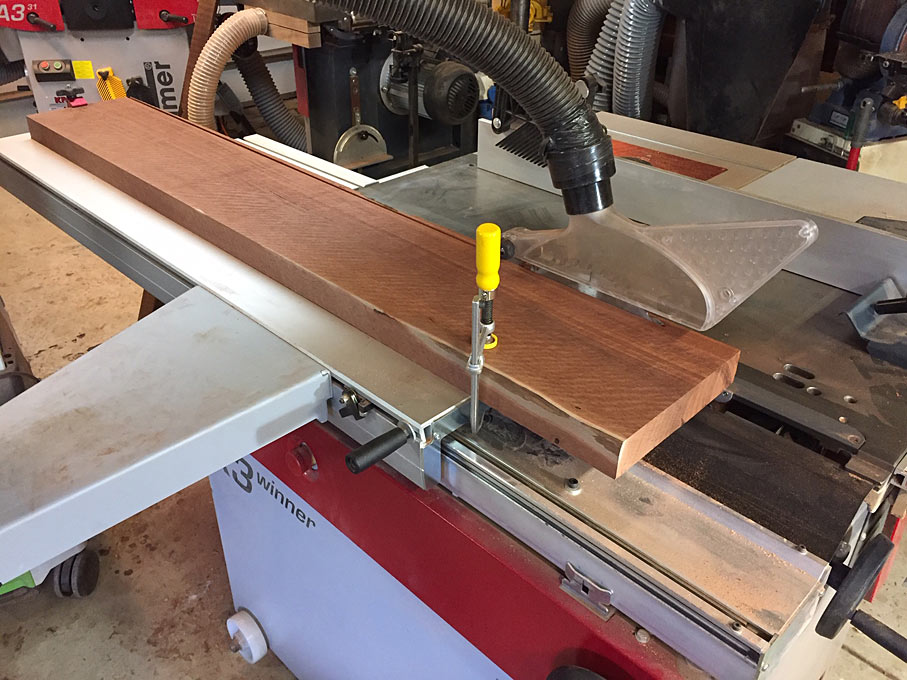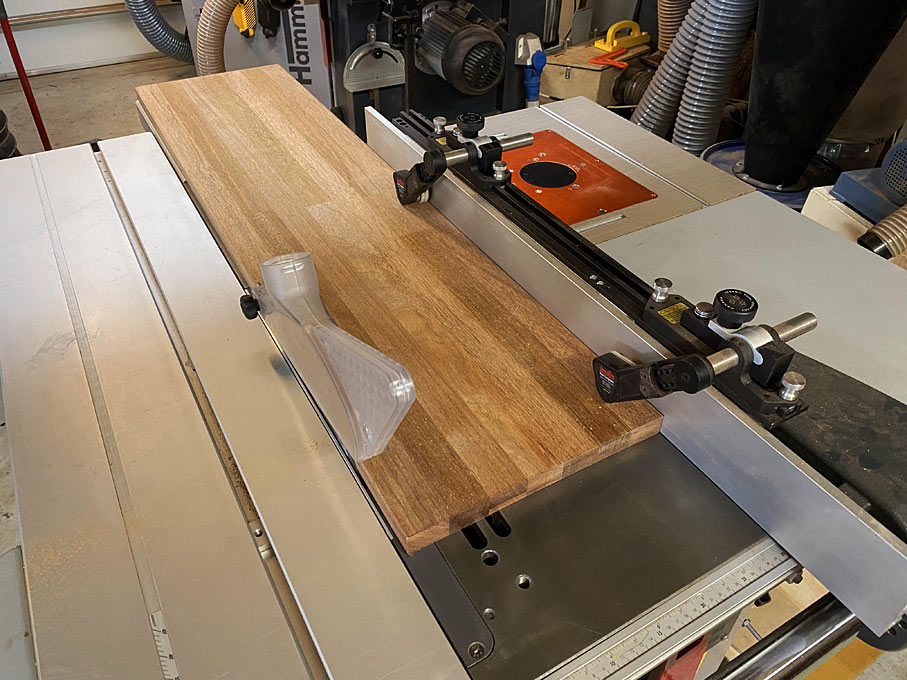
Originally Posted by
Steve Rozmiarek

Just my take, based on around 15 years (i think???) of owning a slider and using regularly. I don't completely understood the confusion on ripping solid stock, but maybe the following will help somebody.
First, you can lay a board on the carriage with no fence and clamp or hold in place to make a straight line rip. This cut is generally perfectly fine without jointing, however in some boards it releases tension and a second lighter pass is required to make a perfectly straight glue line rip.
Second technique is for ripping stock to width, with a straight edge already on the board. Set your rip fence as you would on a cabinet saw and simply use the carriage as a sliding aid as you push the stock through. You can also lock the carriage and your saw is a just a big cabinet saw during this cut. Use a fence that is long enough to extend behind the blade, like most cabinet saws are set up. This technique is the most common way in my shop to rip something longer than the carriage to width. I have an 8' stroke, so it's not necessary often.
Third technique if for ripping to width without a rip fence. You can use stops on both ends of the board, with it riding on the carriage to rip to width. on my saw I just use the crosscut stops on the forward end of the board, and a ripping jig on the rear. A ripping jig is just another set of stops on a tape or digital scale. You can set both stops the same to have parallel rips, or you can offset to rip tapers. I personally don't use this very often as setting two scales is somewhat tedious and I prefer the next technique.
Fourth, and my favorite ripping technique, is to use a short fence set to the width you want, with the fence pulled towards the operator so it stops before the blade. This is a bump fence. It is there solely to position the stock on the carriage, not to guide the stock past the blade. Slide the stock against the bump fence, push down on the stock or clamp, and the cut gets made with no fence beside the blade. Benefits are that it can be incredibly fast, quick to set up, cut stock is not trapped between a fence and a spinning blade, and the cuts are made off the carriage instead of sliding on the table.
There are others, like Fritz and Franz. This is just what I use most often. Having all the various options definitely lets you use the best technique for a particular cut. There are other benefits, for example a slider is the best possible tenoning jig with a simple jig clamped to the carriage. Because everything is adjustable, you also don't need to compromise to make a cut, just configure for ideal and cut away.
I would change one thing if I had a different slider, I would like more depth of cut, so a bigger blade machine would be handy. Mines a 12", well metric equivalent now.





 Reply With Quote
Reply With Quote










